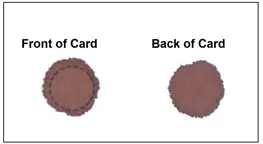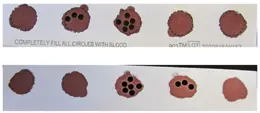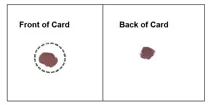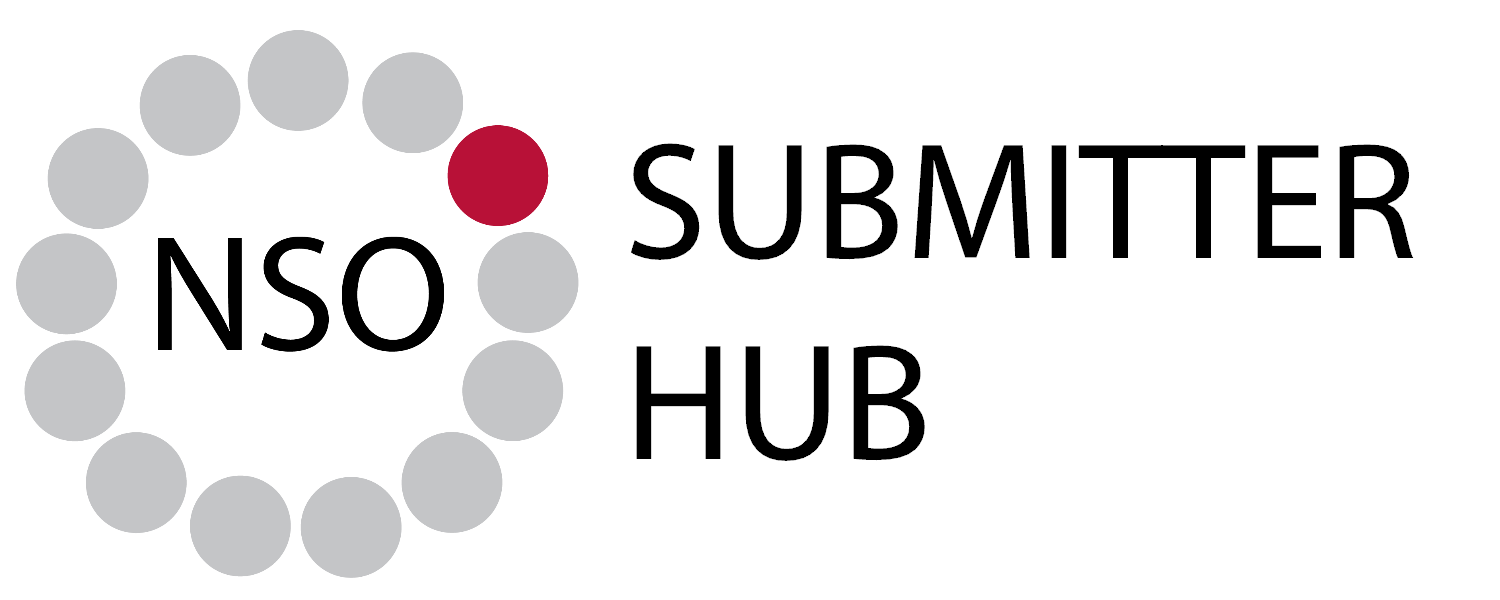Unsatisfactory Specimens for Specimen Quality Reasons
To obtain a satisfactory sample, the blood must fully soak through to the back of the filter paper. No areas of white should be visible on the front or back of the circle.
It is estimated that 75 uL – 100 uL of blood is required to fill one circle on the filter paper. The newborn screening test calculations assume that the blood is evenly distributed within the circle and completely saturates both sides of the filter paper. 3.2 mm diameter punches are taken from the blood spot specimens to be used in the newborn screening tests.


Each specimen received at NSO is reviewed for specimen quality and quantity. Repeat samples are requested for all unsatisfactory specimens. Specimens may be deemed unsatisfactory for the following reasons:


Quantity of blood insufficient
Circles not sufficiently filled. In the first image, although the blood has soaked through to the back of the card, the volume is not sufficient for testing. In the second image, the specimen appears sufficient from the front but is insufficient when viewed from the back.
Both sides of the filter paper should be examined to assure that the blood has uniformly penetrated and saturated the paper. Please do NOT apply blood to both sides of the card. Failure to collect the appropriate number of blood spots may result in the specimen being unsatisfactory for analysis due to insufficient blood.

Blood spots appear scratched or abraded
If you are using a capillary tube or butterfly to collect the blood specimen, do not allow the capillary tube or butterfly to touch the filter paper to avoid damaging the filter paper fibers. Actions such as “colouring in” the circle, repeated dabbing around the circle, or any technique that might scratch, abrade, compress, or indent the paper should not be used. Do not use the infant’s heel to attempt to force the blood through to the back side of the blood spot collection card. This may damage the fibres of the filter paper leading to inaccurate blood volume collection.

Blood spots are wet/discoloured or appear diluted
Do not allow water, feeding formulas, antiseptic solutions, glove powder, hand lotion, or other materials to come into contact with the specimen card before or after use. Ensure that the infant’s heel is clean and dry prior to collecting the specimen. Ensure that the specimen is dry before shipping.
Blood spots are supersaturated, layered, or clotted
Repeated application of blood in the same area or supersaturation of the filter paper may lead to an excess volume of blood being analyzed during testing, potentially resulting in false negative or false positive screening results.
Applying successive drops of blood to already partially dried spots causes “layering” and inaccurate blood volume collection, which results in non-uniform analyte concentrations.

Blood spots exhibit serum rings
Excessive milking or squeezing the puncture may cause hemolysis of the specimen or result in a mixture of tissue fluids with the specimen which can adversely affect the test result.
Blood spots were damaged or delayed in transit
The blood spot collection cards arrived in a wet/damaged envelope.
EDTA contamination
NSO analyzes all samples for the presence of EDTA. If EDTA is detected, the sample is unsatisfactory and a repeat is required.
Contact Us
Children’s Hospital of Eastern Ontario
415 Smyth Road
Ottawa, Ontario K1H 8M8
Toll-Free: 1-877-627-8330
Local: (613) 738-3222
Fax: (613) 738-0853
Contact NSO
Subscribe to the Submitter Bulletins to stay up to date on the latest newborn screening updates, or submit a question about newborn screening.


